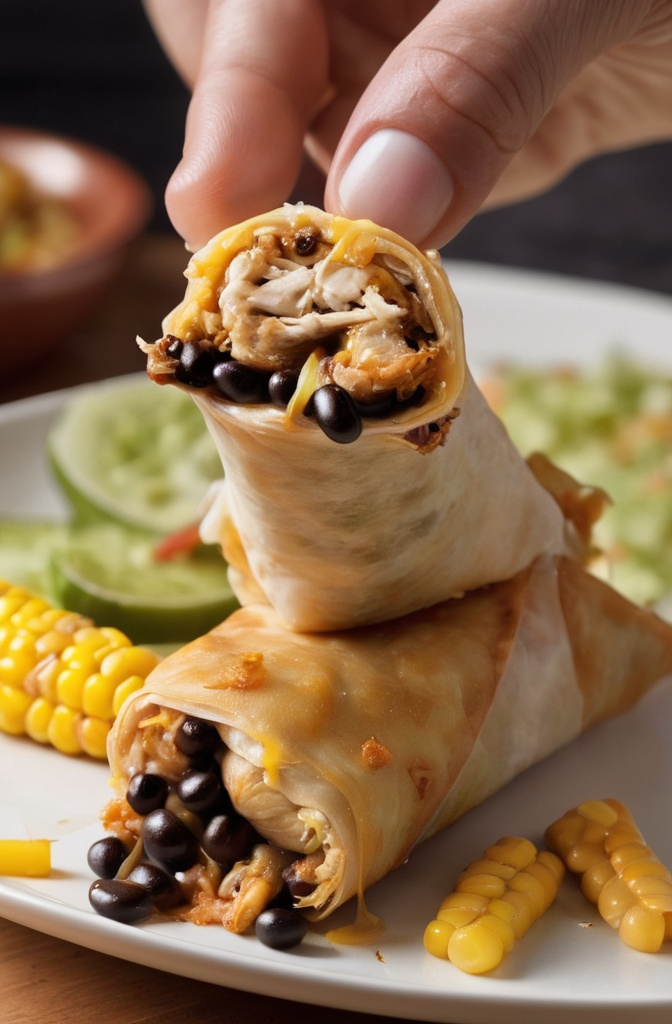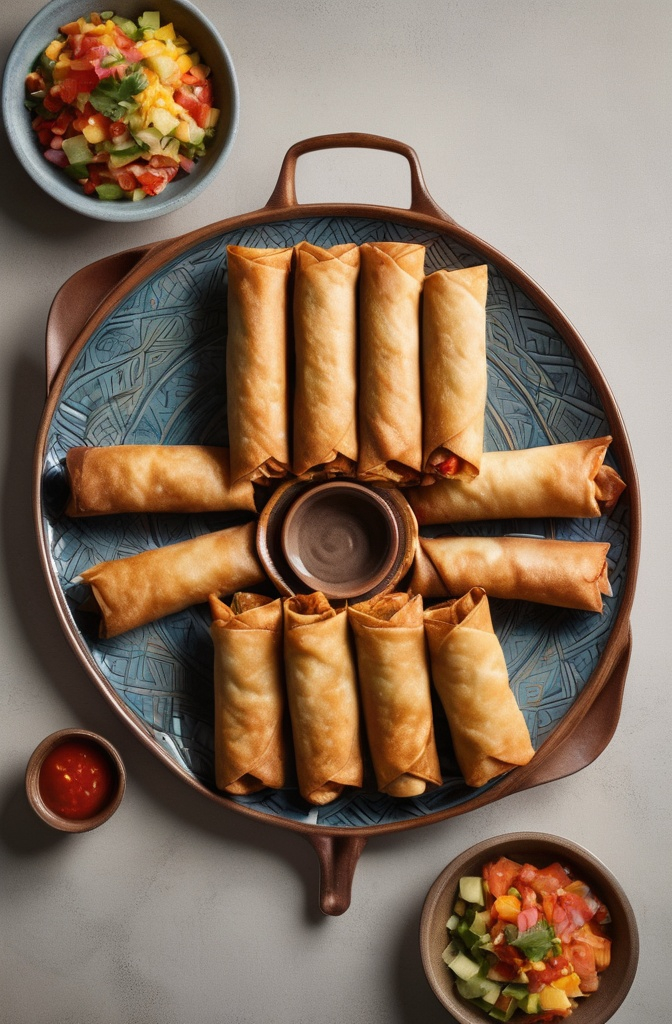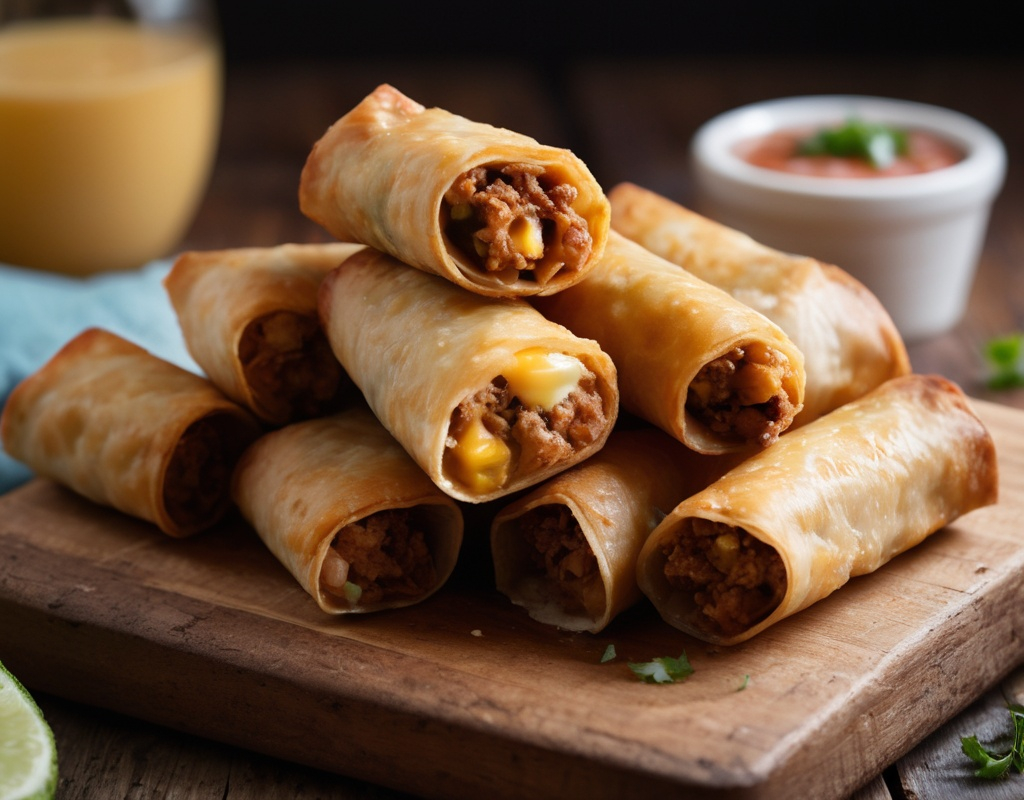Egg rolls might conjure images of crisp, golden-brown appetizers packed with pork and cabbage, but the Tex-Mex inspired egg roll is a whole different beast. It’s where the bold, fiery flavors of Texas and Mexico tango inside a crispy, fried wrapper. This dish isn’t just a snack — it’s a celebration of fusion cuisine, innovation, and flavor layering that professionals can’t overlook.
Tex-Mex egg rolls have surged in popularity across menus, popping up from trendy food trucks to upscale eateries. Why? Because they hit that sweet spot between comfort and creativity. But making them? That’s an art. The balance between crunchy texture, savory filling, and zesty accompaniments is what elevates this dish beyond a simple appetizer.
Let’s dig deep into the anatomy of these egg rolls. I’m talkin’ expert tips, insider tricks, and a little bit of culinary science that’ll get your kitchen buzzing.
What Makes Tex-Mex Egg Rolls Unique?
At first glance, Tex-Mex egg rolls might look like your standard egg roll — but inside, it’s a flavor explosion. Traditional Asian egg rolls lean on pork, cabbage, and sometimes shrimp or chicken, with subtle Asian spices. Tex-Mex twists the filling with ingredients like seasoned ground beef or shredded chicken, black beans, corn, jalapeños, and sharp cheddar or pepper jack cheese. This fusion melds crunchy and creamy, spicy and savory.
A study by the National Restaurant Association found fusion dishes grew 15% in consumer interest in the last 5 years, with Tex-Mex combos leading the charge. That’s no surprise considering Tex-Mex’s widespread appeal—bold flavors, accessible ingredients, and the comfort factor.
The Filling: The Heart of the Egg Roll
The filling can make or break your egg roll. Professionals know that the filling’s moisture content is critical. Too wet, and the wrapper gets soggy and tears. Too dry, and it’s just bland and crumbly. Achieving that perfect balance requires skill and technique.
Start with well-seasoned protein — ground beef or shredded chicken cooked with cumin, smoked paprika, chili powder, and garlic. Add diced jalapeños for heat, black beans and corn for texture, and sharp cheddar or a melty pepper jack for richness. The cheese adds a gooey contrast to the crispy shell. Some chefs swear by adding a spoonful of cream cheese to bind everything together. It’s not traditional, but it’s oh-so-good.
Dry ingredients like diced bell peppers and green onions add crunch and freshness. Once your filling is cooked, it’s best to cool it completely before wrapping. Steaming the filling inside the egg roll can cause the wrapper to steam rather than fry crisp.

Wrapping Like a Pro
Wrapping these babies is a skill set all its own. Egg roll wrappers are thinner and more delicate than traditional spring roll wrappers, so handling is crucial. Brush the edges with water or a beaten egg to seal properly, avoiding leaks.
A tight wrap is essential. Gaps can trap steam and lead to soggy spots. For professionals, a quick test is to drop a wrapped egg roll into cold water; if it floats and holds its shape, you’re good. If it falls apart, wrap tighter.
Also, never overstuff. Tempting as it is, too much filling makes sealing tricky and causes uneven frying.
Frying Science: Achieving That Perfect Crunch
Frying temperature matters. 350°F to 375°F (175°C-190°C) is the sweet spot. Too low, and the egg roll absorbs oil, turning greasy. Too hot, and the outside burns before the inside cooks.
Many pros use a deep-fryer or heavy-bottomed pot with a thermometer for accuracy. Avoid overcrowding — adding too many egg rolls at once drops oil temperature sharply.
The oil type? Neutral oils with high smoke points like canola, peanut, or vegetable oil work best. Some chefs experiment with avocado oil for a healthier twist, but it changes the flavor slightly.
The golden hue of the wrapper comes not just from temperature but from a chemical reaction called the Maillard reaction. That browning adds complex flavor notes beyond just crunch.
Serving Suggestions: Dips and Sides
Tex-Mex egg rolls deserve accompaniments that elevate their flavor profile. Traditional soy or sweet chili sauce? Nah, try guacamole or chipotle aioli for creamy heat. A fresh pico de gallo on the side adds brightness and acidity.
Some restaurants serve them with a side of ranch dressing — a Tex-Mex staple that surprisingly complements the spiciness.
Don’t underestimate the power of presentation. A sprinkle of cilantro, a wedge of lime, or even a dusting of smoked paprika on the plate amps up visual appeal and aroma.
Common Misconceptions & Troubleshooting
Many think egg rolls should be deep-fried only. That’s not the case. Baking or air-frying works well for healthier menus. But beware — baking lacks the quick, intense heat of oil, so wrappers won’t get as crunchy. Air frying offers a decent compromise with less oil, but texture differs subtly.
Another misconception: Tex-Mex egg rolls are just ‘fried burritos.’ No way. The smaller size, thin wrapper, and mix of melting cheese and spicy filling distinguish them. They’re more delicate, more nuanced.
If the wrapper gets soggy, moisture control is key. Drain beans and corn thoroughly, pat filling dry if needed, and make sure to fry at the right temperature.

Emerging Trends in Tex-Mex Egg Rolls
Plant-based alternatives are rising. Chefs experiment with jackfruit, tofu, or vegan cheeses to cater to flexitarians and vegans without sacrificing flavor.
Also, smoky and fermented elements like chipotle peppers or pickled jalapeños bring deeper flavor complexity. Fermentation is trending globally for its tang and umami boost.
There’s also a miniaturization trend: bite-sized egg rolls for cocktail parties or upscale appetizers. Smaller size means crispier bites and more intense flavor delivery.
Real-World Example: A Restaurant Success Story
A popular Tex-Mex chain in Texas revamped their appetizer menu by introducing Tex-Mex egg rolls. They combined seasoned brisket, black beans, corn, and a hint of smoked cheddar, wrapped in fresh egg roll wrappers. Sales increased by 20% in 3 months, with customers praising the crispy exterior and juicy, flavorful filling.
This success was driven by perfecting the filling moisture and frying technique, plus pairing with a homemade chipotle ranch dip. It shows how mastery of fundamentals plus innovation creates menu winners.
Summary & Pro Tips
Tex-Mex inspired egg rolls aren’t just an appetizer—they’re a canvas for culinary creativity. The secret lies in balancing filling moisture, seasoning boldly, wrapping tightly, and frying with precision. Incorporate zesty, layered flavors that reflect Tex-Mex roots.
Experiment with plant-based fillings or fermented ingredients to stay on trend. Serve with vibrant dips and garnish for maximum impact.
For pros, mastering these egg rolls can open doors to a lucrative menu addition that customers crave. They’re approachable, scalable, and endlessly adaptable. Dive in and let your kitchen create that perfect crunch filled with a Tex-Mex fiesta.
FAQs
What makes Tex-Mex egg rolls different from traditional egg rolls?
They combine classic egg roll crunch with bold Tex-Mex fillings like seasoned beef, beans, corn, and cheese.
How do you prevent the egg roll wrapper from getting soggy?
Use a dry filling, drain moisture well, and fry at the right oil temperature (350–375°F).
Can Tex-Mex egg rolls be baked or air-fried instead of deep-fried?
Yes, but baking and air-frying yield less crispiness compared to deep-frying.
What fillings work best for Tex-Mex egg rolls?
Seasoned ground beef or chicken, black beans, corn, jalapeños, and melty cheeses like cheddar or pepper jack.
How important is frying temperature for these egg rolls?
Crucial—too low makes them greasy, too high burns the wrapper before cooking inside.
Can Tex-Mex egg rolls be made vegan?
Yes, with jackfruit, tofu, or vegan cheeses as fillings.
What dips pair well with Tex-Mex egg rolls?
Chipotle aioli, guacamole, pico de gallo, or ranch dressing complement them best.
Why add cream cheese to the filling?
It binds ingredients and adds creamy richness.
How do you properly wrap Tex-Mex egg rolls?
Wrap tightly with sealed edges using water or egg wash to prevent leaks.
Are mini Tex-Mex egg rolls popular?
Yes, bite-sized versions are trending for appetizers and parties.

Mariana is a passionate home cook who creates delicious, easy-to-follow recipes for busy people. From energizing breakfasts to satisfying dinners and indulgent desserts, her dishes are designed to fuel both your body and hustle.
When she’s not in the kitchen, she’s exploring new flavors and dreaming up her next recipe to share with the Foodie Hustle community.

